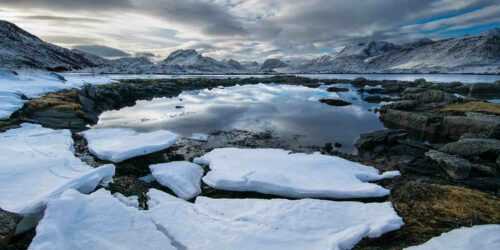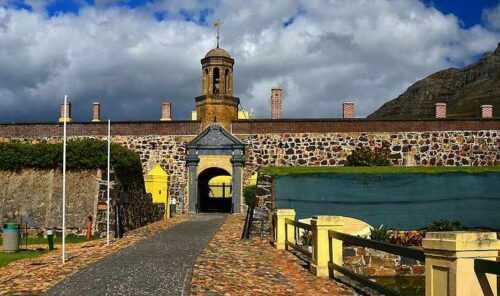
India is a land of culture, and mystery makes its way through it. The mysteries in India have intrigued tourists from around the world, and it doesn’t disappoint. Roopkund Mystery is one of them.
Take the case of the haunted Bhangarh fort in Rajasthan or the skeleton lake in Uttrakhand, India has always surprised everyone.
The Himalayan ranges are home to several religious places, beautiful valleys, astonishing summits, and incredible wildlife. However, the youngest mountain ranges in the world have uncountable mysterious things within them. It is often said the beauty of the mountains and valleys isn’t everything.
One such place in the Himalayan ranges is a mysterious lake surrounded by snowy mountains called Roopkund, known as (Mystery Lake or Skeletons Lake).
Yes, you read it right! The skeleton lake.
Roopkund Lake has some stories from ancient India which speak about the formation of the lake. There also have been researchers from renowned universities who have conducted biological tests on the skeletons found near this lake.
Let us understand the formation, the stories, the research tests, results obtained from the samples, and what the locals say about the lake, which gives it an aura of mysteriousness like no other lake in the world.
About the place and Location
Roopkund is a high-altitude glacial lake in the state of Uttarakhand, North India.
It lies in the foothills of a group of mountains known as Trishul.
Due to its tedious location and altitude, there is no habitation around the lake. It is situated at an altitude of 16,470 feet (5,020 m). It is moreover surrounded by rock-strewn glaciers and thick snow, owing to which it is also a popular trekking destination.
Roopkund lake mystery
It is a pretty difficult climb and requires days to reach the lake with many basecamps along the way.
Why is Roopkund Trek not allowed?
The well known trip which has had numerous adventurers stroll following right after its in the wake of being a consistent top choice for a long time has at last been restricted because of the damage that we have caused to the biodiversity of the high glades which fall on the path.
Roopkund trek distance:- Complete journey distance is around 15 Km and may require 8 to 10 hours relying on the snow condition.
The depth of Roopkund Lake is around 3 meters or more when the snow melts.
The most fascinating and eerie part about the lake is the human skeletons lying all around. More such skeletons can be seen on the banks and in the lake as the snow around it melts, exposing the ground.
As far as tourism is concerned, it is an attractive place because of its location, which is right between two Himalayan summits; Trishul and Nanda Ghunti.
A religious event takes place at Bedni Bugyal every autumn, with a huge number of locals participating. An even larger festival, Nanda Devi Raj Jat, takes place once in 12 years at Roopkund Lake as a salutation and worship to Goddess Nanda.
The lake is completely covered with snow but sometimes the snow melts due to a rise in temperature.
Roopkund formation stories
There are many legends about the formation of Roopkund Lake, one being that of Lord Shiva and Goddess Parvati. Goddess Parvati had fought demons on her way to Kailash (also known as Trishul) and was feeling dirty.
Lord Shiva created this lake by using the Trishul which then resulted in the formation of Roopkund Lake. Goddess Parvati took a dip in the lake and could see her reflection clearly in the blue water of the lake. Therefore, it is known as Roopkund.
The mysterious human skeletons
The first story comes from an old era when a local legend King of Kanuj, Raja Jasdhaval, with his pregnant wife and his associates, was on a pilgrim heading to Nanda Devi shrine.
They were supposedly caught up in a heavy hailstorm, which resulted in killing everyone near Roopkund. There were remnants of more than 300 individuals around the lake, which was a matter of astonishment.
The remnants were first discovered by a ranger named Hari Kishan Mahal in the year 1942. The British thought it might have been a secret Japanese invasion, but later on, the skeletons came out to be much older than that.
In 2003, the International broadcasting network National Geographic successfully retrieving 30 skeletons with flesh still intact.
In 1950, The Archaeological Survey of India carried out a research operation of scrutinizing these remnants. After the research, it was said that the skeletons had several head injuries that were caused due to a round object, possibly a hailstorm.
Recently, Oxford University conducted radiocarbon dating and found that the skeletons belong to a group from the Mediterranean or South-East Asia somewhere in 1800.
Some more researches found countering the previous research by saying the South Asian remnants are older than the South-East Asian or Mediterranean remnants and that they have been diseased in two different events.
No doubt that this place is the most mysterious places in india but there many others like Jatinga, Tale of Twins, Magnetic Hill, Kongka La Pass, Kuldhara, and many others.
Environmental and Conservation concerns
On hearing about the mysterious discoveries at Roopkund Lake, many tourists started flocking, and there have been cases of tourists hampering the skeletons, due to which soon there can be no skeletons. It is also reported that the tourists carry back these bones on a large number.
The locals have expressed deep concern due to the actions of the tourists. A need to protect the place has emerged as a necessity for shedding light on the bones’ mysterious presence. The government officials have made efforts to develop this area as an eco-tourism spot for strict regulations.
How to reach Roopkund Lake?
Reaching Roopkund is itself a trek that has been preferred and attracted many tourists from all around the world. It is one of the most preferred treks in the state of Uttarakhand. The trip starts from a small village called Lohajung, from where the trek starts.
Thereafter, crossing Didina village, Ali Bugyal, Bedni Bugyal, Patar Nauchani, and Baguabasa reached Roopkund, which is at 16,470 ft. The names mentioned are the different base camps one has to cross to reach Roopkund Lake.
Recently, the government banned the trek due to an increase in conservation and environmental issues.
The country of India is full of such mysteries and exciting features. As a tourist, it is important to respect and let things be as they are because that makes them stand out.
The Roopkund may not be accessible now, but someday when it is, one must understand its importance. It helps you find a reason to visit challenging places like the Himalayas and teach many things on the way.
What is the mystery of Roopkund?
A strange lake where between 300 to 800 individuals met their terrible end.
Also the freezing Himalayas kept on protecting the human remaining parts.
Why is Roopkund called Mystery Lake?
When the snow dissolves are the skeletons apparent, once in a while with tissue connected and all around saved. Until now, the skeletal remaining parts of an expected 600-800 individuals have been seen as here. In the travel industry advancements, the neighbourhood government portrays it as a “Mystery lake”.
Read Also:






